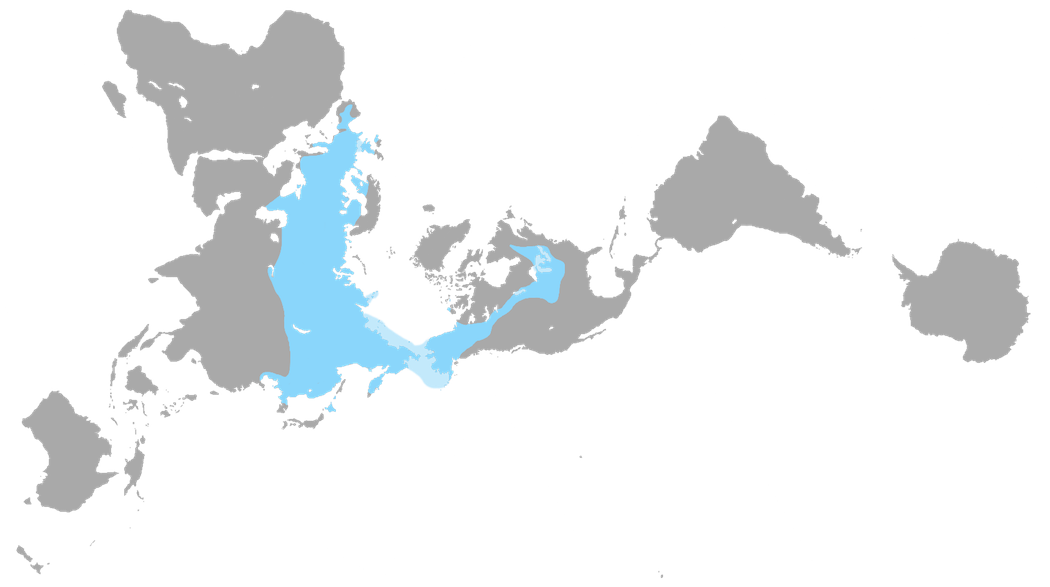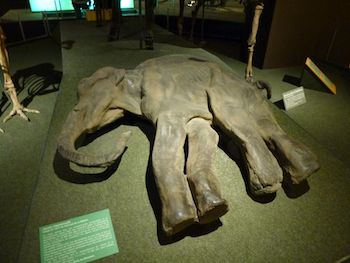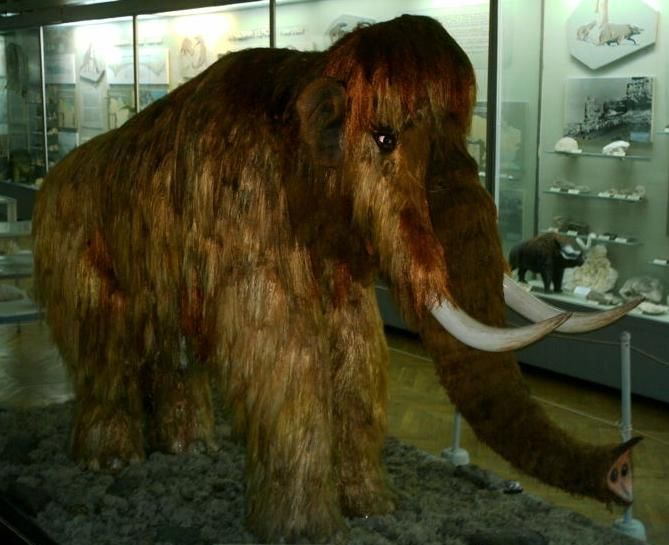Woolly Mammoth
Several species of mammoths existed in the Pliocene and Pleistocene epochs, but all are now extinct. The woolly mammoth was probably the last to disappear. It had vanished from its principal range (called the mammoth steppe), which stretched across northern Eurasia and North America, by about 10,000 years ago, although isolated populations lingered much later on a few arctic islands. (They were, however, gone by the time that Thomas Jefferson, basing his hopes on the bones of what have subsequently been identified as mastodons, claimed that they continued to roam the trans-Appalachian west. Mastodons were also long gone by then.)

Due to the combination of their relatively recent disappearance and the cold climate of their arctic and subarctic habitat, over the last few centuries frozen mammoths have occasionally emerged from the permafrost, with flesh, blood, and stomach contents in reasonably good condition.  There are repeated plausible reports of their defrosted remains being fed to dogs, who apparently survived its ingestion, as well as less plausible reports of adventurous humans dining on it. Mammoth DNA also survived this protracted chill in good condition, and so, after genetic analysis became available, scientists determined that their closest living relatives are the Asian elephants (and that mammoths are closer to Asian elephants than are the extant African elephants). The good condition of their frozen DNA, along with the potential availability of Asian elephants as surrogate mothers, has also made mammoths an attractive target for deextinction, in the imaginations of both scientists and enthusiasts like the supporters of the Pleistocene Park in Siberia, which currently aims to "restore the mammoth steppe ecosystem," and which in the unspecified future hopes to enhance its populations of bison, musk ox, moose, horses, and reindeer with resurrected woolly mammoths.
There are repeated plausible reports of their defrosted remains being fed to dogs, who apparently survived its ingestion, as well as less plausible reports of adventurous humans dining on it. Mammoth DNA also survived this protracted chill in good condition, and so, after genetic analysis became available, scientists determined that their closest living relatives are the Asian elephants (and that mammoths are closer to Asian elephants than are the extant African elephants). The good condition of their frozen DNA, along with the potential availability of Asian elephants as surrogate mothers, has also made mammoths an attractive target for deextinction, in the imaginations of both scientists and enthusiasts like the supporters of the Pleistocene Park in Siberia, which currently aims to "restore the mammoth steppe ecosystem," and which in the unspecified future hopes to enhance its populations of bison, musk ox, moose, horses, and reindeer with resurrected woolly mammoths.
 It is difficult to pinpoint the cause of the mammoths' decline and disappearance. It may reflect the climatic shifts, and associated changes in vegetation, that followed the retreat of the last Pleistocene glaciation. But, at least in North America, it closely followed the advent of human hunters. Within a thousand years mammoths, giant ground sloths, sabertoothed cats, dire wolves, horses, camels, and long-horned bison had all vanished. A similarly coincidental series of extinctions occurred after the first humans reached Australia (giant marsupials ), New Zealand (enormous meaty flightless birds called moas), and Madagascar (giant lemurs). Humans apparently have always manifested a tendency to aggressive overhunting, which has had the effect of radically reducing the number (and the number of kinds) of large animals with whom they share their territory. Ultimately it deprives humans of a resource on which they have depended for food. The effect is particularly striking when humans suddenly appear in an ecosystem; when the megafauna has had time to coevolve with people as in Africa and to a lesser extent in Eurasia, the effect has tended to be less drastic.
It is difficult to pinpoint the cause of the mammoths' decline and disappearance. It may reflect the climatic shifts, and associated changes in vegetation, that followed the retreat of the last Pleistocene glaciation. But, at least in North America, it closely followed the advent of human hunters. Within a thousand years mammoths, giant ground sloths, sabertoothed cats, dire wolves, horses, camels, and long-horned bison had all vanished. A similarly coincidental series of extinctions occurred after the first humans reached Australia (giant marsupials ), New Zealand (enormous meaty flightless birds called moas), and Madagascar (giant lemurs). Humans apparently have always manifested a tendency to aggressive overhunting, which has had the effect of radically reducing the number (and the number of kinds) of large animals with whom they share their territory. Ultimately it deprives humans of a resource on which they have depended for food. The effect is particularly striking when humans suddenly appear in an ecosystem; when the megafauna has had time to coevolve with people as in Africa and to a lesser extent in Eurasia, the effect has tended to be less drastic.
| « Introduction | Aurochs » |
